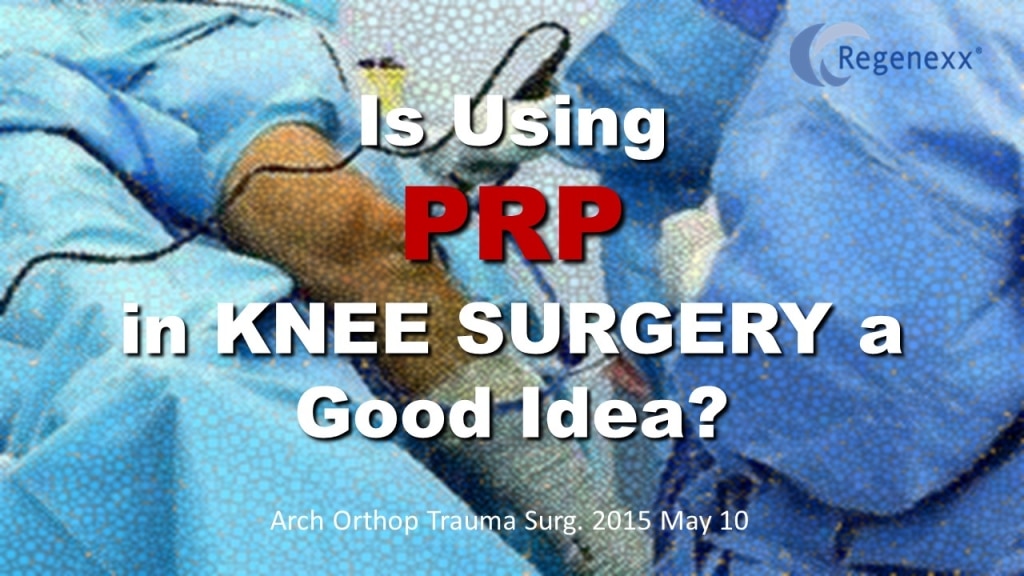Does Using PRP in Knee Arthroscopy Improve Outcome?
There is a new trend developing in orthopedic surgery…the addition of PRP in knee arthroscopy. Given the healing potential of PRP, is surgical outcome improved by adding it at the time of surgery? New research suggests it might.
PRP stands for platelet rich plasma, where platelets from a patient’s whole blood are concentrated in serum. It contains many growth factors and cytokines and works by stimulating local stem cells and other cells to repair things faster or to prompt repair in an area that was unable to repair itself. Leukocyte poor PRP, is PRP in which the white blood cells have been removed. Both white and red blood cells left in the PRP can cause inflammation and inhibit the same local stem cells the platelets are trying to stimulate, so removing both the white and red blood cells should create better PRP.
The new study was a double blinded RCT of 58 subjects who had knee arthroscopy for meniscal or cartilage degeneration. 24 of them were randomized to receive leukocyte poor PRP injected into the joint at the time of surgery, and 34 did not. Pain, function and quality of life were tested at baseline, 6wks, 6 months and 12 months. The results showed that the PRP enhanced function and lessened pain within 6-12 months compared to the control group.
The upshot? Adding PRP is a step in the right direction – it’s just a misplaced one. By adding it at the end of the surgery PRP would be helpful in healing the tissue damage created by the surgery, but wouldn’t it make more sense to not create that damage and use the healing potential of the PRP to treat the meniscus or cartilage directly? Its kind of like this… If you get a nail in your tire, you can carefully remove the nail and successfully patch it – or you can slit the tire open to remove the nail, weakening the tire and then patch it all with the same patch. Same nail, same patch, different results!

If you have questions or comments about this blog post, please email us at [email protected]
NOTE: This blog post provides general information to help the reader better understand regenerative medicine, musculoskeletal health, and related subjects. All content provided in this blog, website, or any linked materials, including text, graphics, images, patient profiles, outcomes, and information, are not intended and should not be considered or used as a substitute for medical advice, diagnosis, or treatment. Please always consult with a professional and certified healthcare provider to discuss if a treatment is right for you.
